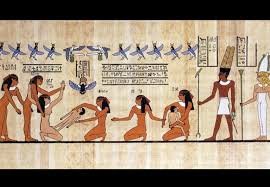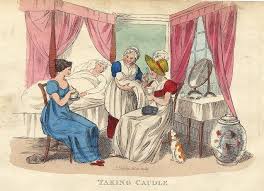Midwifery and Obstetrics: From Ancient Wisdom to Modern Practice
Introduction to Midwifery and Obstetrics
Welcome to the foundations of Midwifery and Obstetrics. In my blog, I aim to build the essential knowledge base that will support your journey toward becoming skilled and compassionate midwives.
Overview of Midwifery: Role of the Midwife, History, and Modern Practices
The Role of the Midwife
The word “midwife” literally means “with woman,” and this simple definition captures the essence of our profession. Midwives are specialised healthcare providers who offer care to women during pregnancy, labour, birth, and the postpartum period. We also provide reproductive healthcare throughout the lifespan, from adolescence through menopause and beyond.
The International Confederation of Midwives defines a midwife as:
A person who has successfully completed a midwifery education program that is recognized in the country where it is located and that is based on the ICM Essential Competencies for Basic Midwifery Practice and the framework of the ICM Global Standards for Midwifery Education; who has acquired the requisite qualifications to be registered and/or legally licensed to practice midwifery and use the title ‘midwife’; and who demonstrates competency in the practice of midwifery.
Our scope of practice includes:
- Providing comprehensive antenatal care
- Monitoring maternal and fetal well-being during pregnancy
- Conducting normal deliveries and recognising complications
- Providing immediate care for the newborn
- Supporting breastfeeding and early parenting
- Offering family planning and gynaecological services
- Advocating for women and their families
Central to midwifery is the philosophy that pregnancy and birth are normal physiological processes. We work to protect the normalcy of birth while being vigilant for signs that intervention may be necessary.
Historical Perspectives
Midwifery is one of the oldest professions in human history. Throughout time, in virtually every culture, women have supported other women during childbirth. Early midwives passed their knowledge through apprenticeship, with skills and wisdom transmitted from generation to generation.
Ancient Civilisations: Records from ancient Egypt, Greece, and Rome document the work of midwives. The Greek physician Hippocrates wrote extensively about midwifery in the 5th century BCE. Egyptian papyri dating back to around 1900 BCE described various birthing techniques and positions.

Middle Ages: In Europe, midwifery remained women’s work, with midwives serving communities and passing knowledge through apprenticeship. Many have accumulated significant herbal knowledge and provided general healthcare to women.

The Shift to Male Dominance: The 17th and 18th centuries witnessed the emergence of male “barber-surgeons” and later obstetricians, who began attending births, particularly among the wealthy, and introduced instruments like forceps. This marked the beginning of the medicalisation of childbirth and the marginalisation of midwives.
The 19th and Early 20th Centuries: Formal midwifery education emerged, with the professionalisation of midwifery in countries like Britain, where the Midwives Act of 1902 established regulation and training standards. In the United States, however, midwifery was actively suppressed as birth moved from homes to hospitals.

Mid-20th Century: The natural childbirth movement began to question the highly medicalised approach to birth. Advocates like Grantly Dick-Read, Fernand Lamaze, and later Michel Odent promoted women-centred birth approaches.

Late 20th Century to Present: We’ve seen a revival of midwifery in many countries, with recognition of midwives as primary maternity care providers. Research has demonstrated the safety and effectiveness of midwifery care, particularly the midwifery model that views birth as a normal physiological process.
Modern Midwifery Practice
Today’s midwifery stands at an interesting junction between ancient wisdom and contemporary science. Modern midwives integrate evidence-based practice with the traditional art of “being with women.”
Settings of Practice:
- Hospital-based midwifery
- Birth centre midwifery
- Home birth practice
- Community clinics and public health settings
- Educational institutions
Models of Care:
- The Midwifery Model of Care emphasises normality, minimal intervention, and continuity of care
- Team midwifery models, where groups of midwives share caseloads
- Collaborative practice with physicians and other healthcare providers
- Caseload midwifery, where midwives follow a set number of women throughout their care
Education and Regulation: Modern midwives undergo rigorous education combining theoretical knowledge with clinical practice. Depending on the country, midwives may:
- Complete direct-entry midwifery programs (bachelor’s or master’s level)
- Train as nurses first and then specialise in midwifery
- Complete apprenticeship programs followed by a formal evaluation
Regulation varies by country and sometimes by state/province, with most developed nations having established regulatory frameworks for midwifery practice.
Evidence-Based Practice: Contemporary midwifery is guided by research evidence. Numerous studies, including the landmark Cochrane Reviews, have demonstrated that midwifery-led continuity of care models result in:
- Reduced intervention rates (fewer episiotomies, instrumental deliveries)
- Lower rates of regional analgesia
- Fewer preterm births
- Greater maternal satisfaction
- Equal or better outcomes for babies
Summarised Conclusion:
The Foundations of Midwifery and Obstetrics blog begins by grounding itself in the essential history, philosophy, and evolving practice of midwifery. From its deep cultural and historical roots to the emergence of modern, evidence-based care, midwifery has remained centred on the holistic support of women through pregnancy, birth, and beyond. This emphasises that midwifery is not just a profession but a calling—one that blends traditional knowledge, clinical expertise, and compassionate advocacy. As we move forward in this course, students will continue building a strong foundation to serve as skilled, informed, and empathetic midwives in today’s dynamic healthcare environment.
📣 Call to Action:
Are you ready to embark on a journey that combines science, tradition, and compassion? Stay engaged, take notes, and ask questions—your foundation in midwifery starts here.
